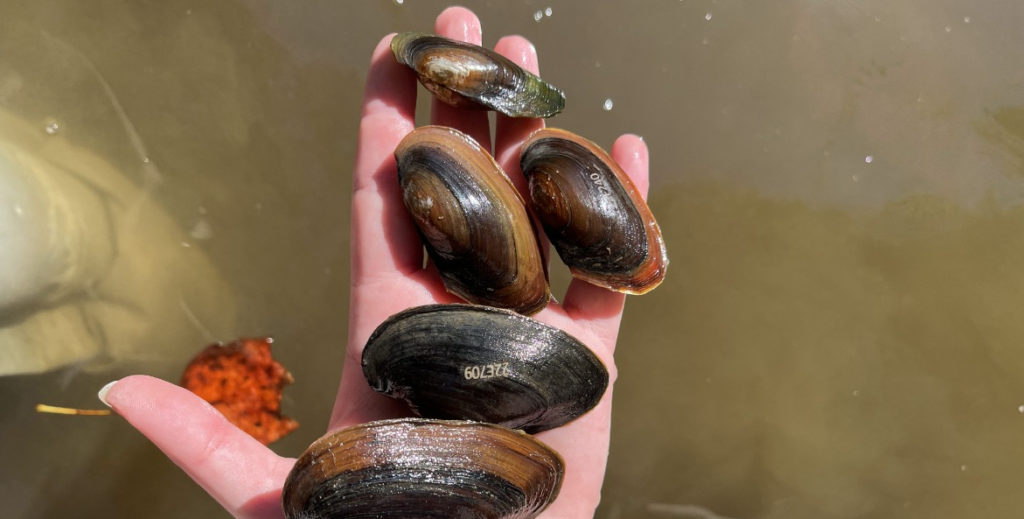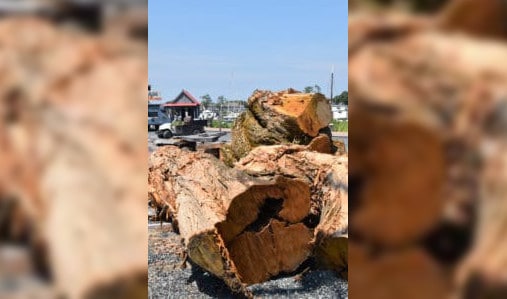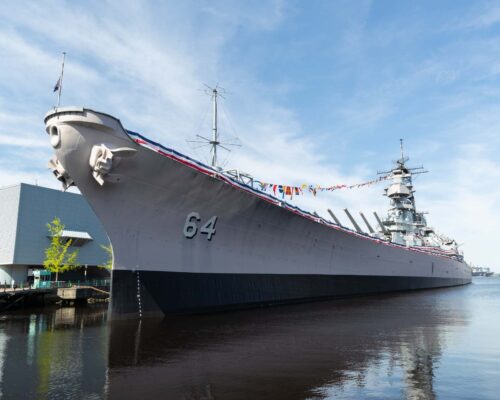Virginia waterways will soon be better homes for freshwater mussels, thanks to a new round of grant awards from the National Fish & Wildlife Foundation for the Chesapeake Bay Foundation (CBF) and the James River Association (JRA).
The coordinated grants will support robust regional planning to improve habitat for freshwater mussel communities in Virginia waterways.
The CBF grant ($73,800, with matching funds of $12,000) will “increase habitat connectivity and quality for at-risk and federally-listed populations of native freshwater mussels”. Partners will work together to create a Mussel Richness Map for Virginia and will prioritize buffer placement for the best chance to improve mussel habitat. Those tools and resources will be used to restore mussels and clean up water quality.
The JRA grant ($51,800 with matching funds of $25,000) will give government departments, federal agencies, nonprofits, and project funders a James River basin freshwater mussel restoration plan. This proactive restoration plan will guide planting activities and identify areas to target for further surveys and investigation.
The two grants will fill important planning needs identified in Incorporating Freshwater Mussels into the Chesapeake Bay Restoration Efforts, the report of a workshop conducted by the Chesapeake Bay Program’s Scientific and Technical Advisory Committee in 2020. It was the start of a comprehensive, Bay watershed-wide mussel restoration program, to be incorporated into the Chesapeake Bay Watershed Agreement. The report says, “Mussels provide ecosystem services which benefit water and habitat quality.” They have significant potential to reduce nitrogen, phosphorus, and sediment pollution in upstream waterways of the Chesapeake.
As CBF’s Dr. Joe Wood, who chaired the workshop, put it, “We know 23 species of freshwater mussels live in Virginia’s Bay watershed. We believe that, historically, they grew everywhere. Even so, we have only a rough estimate of who lives best where. This project will require a partnership.”
Wood says the Natural Heritage Program at Virginia’s Department of Conservation and Recreation will look at all of the historical records for freshwater mussels and develop a predictive model for each species to fit its habitat. The Department of Wilidlife Resources has a freshwater mussel team, which will impart its techniques for raising and planting native mussels in Virginia waterways.
“We hope those folks also find some remnant beds that need protection,” Wood says. The new Mussel Richness Map will include locations of historical beds that are now extinct.
Then, CBF’s Geographic Information team will add a Conservation Buffer Layer to the map that will show the best opportunities for protecting and restoring mussel beds.
“We plan to develop this tool in a year, so the Natural Heritage Program can send out field teams to ground-truth it next summer,” says Wood.
The next stage the map could help with is to target planting of forested stream buffers and seeking conservation easements, in the name of mussels for the first time.
Wood explains that JRA’s grant will go to build a specific, detailed James River plan to go with the CBF/DCR plan.
And with CBF and JRA’s new efforts underway, both organizations’ education programs will be able to teach students in the field about mussel restoration in freshwater streams.
-John Page Williams



